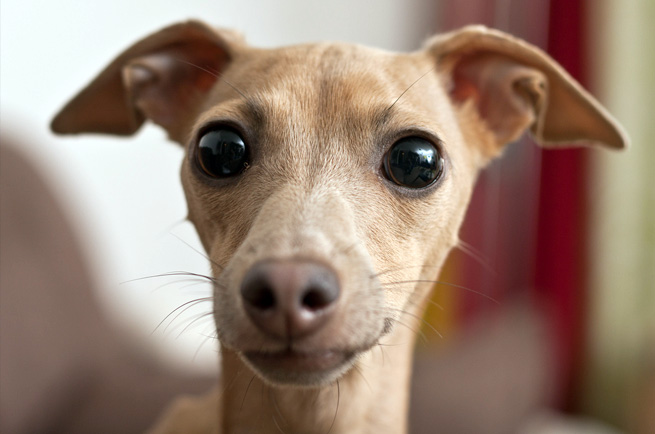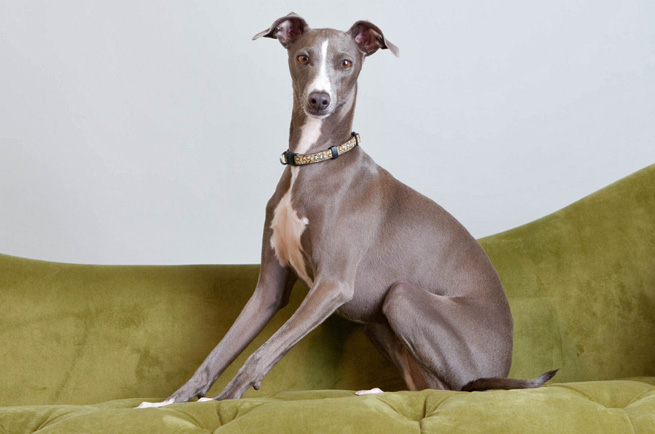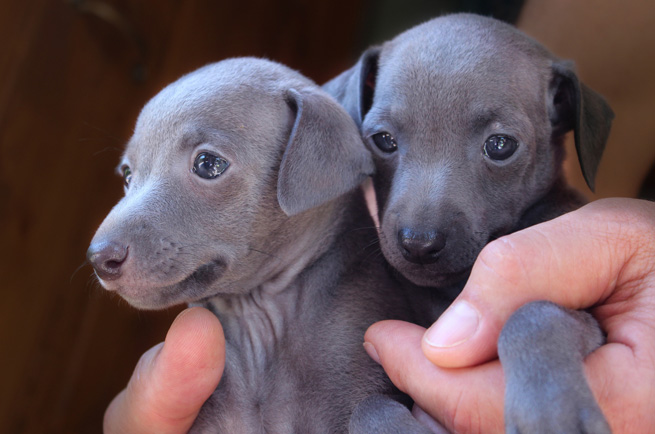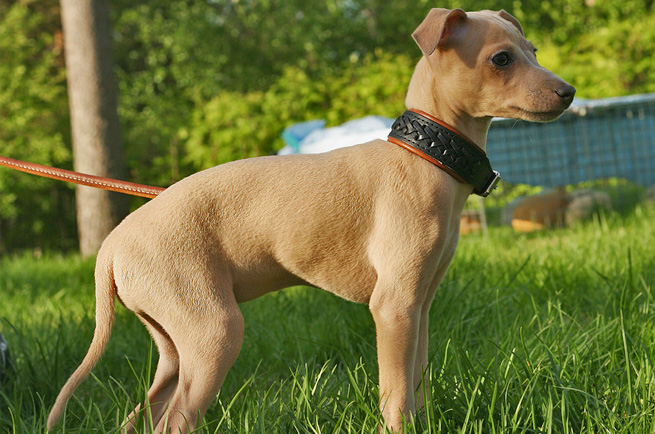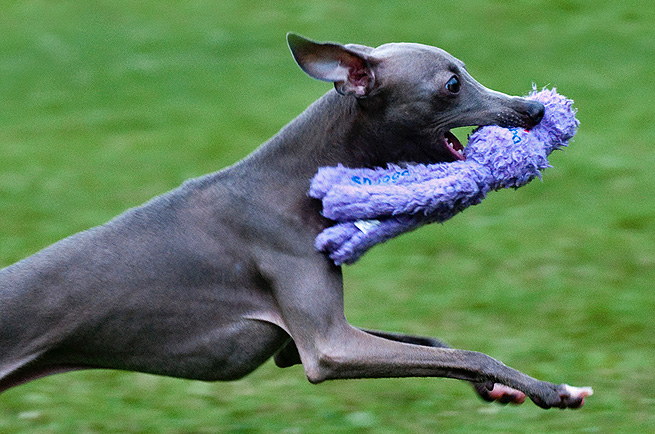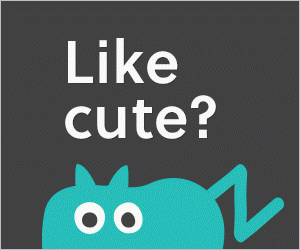Italian Greyhound
Just like a standard greyhound only MINIATURE! This elegant and slender dog can be as fast as a bullet when it wants to be. The coat is smooth, glossy and can come in a variety of shades. Italian Greyhounds have a narrow head with a very fine muzzle and soft floppy ears. The spine slopes gently and they walk with a high-stepping gait. If you like the aesthetic of a greyhound but don't want a small pony, an Italian Greyhound could be the solution.
Other Names
Iggy
Country of Origin
Italy
Colour
Black, fawn, red, cream or blue. White markings may be on the chest and feet.
Size
Small
Height / Weight
Ideally both dogs and bitches measure between 32 - 38cms and weigh between 3.6 - 4.5kgs.
Health
The primary problems with Italian Greyhounds is the tremendous fragility of their leg bones during adolescence. Common ailments: Bones (Acquired) - Fracture - Closed, Bones (Acquired) - Fracture - Complete, Bones (Acquired) - Fracture - Incomplete ("Greenstick"), Endocrine - Hyperthyroidism, Eye - Cataract - Hereditary, Eye - Glaucoma, Eye - Progressive retinal atrophy PRA, Gut - Anal sac tumour, Missing teeth, colour mutant alopecia, Mouth - Dental calculus, Mouth - Dental tartar, Mouth - Malocclusion (Overshot or undershot jaw), optic nerve hypoplasia, Poisons & Toxins - Organophosphates, thrombocytopaenia, corneal dystrophy,
Life Span
13-15 years
Intelligence
While Italian Greyhounds are smart dogs they usually only exercise it when they can get something out of it. They can be difficult to housetrain and, due to their hound instincts, can be trouble to call back to you when they're following a scent.
Exercise
High
Suitability (Children)
Low
Feeding
Italian Greyhounds are good eaters and need frequent small meals, especially during puppyhood and adolescence as they can be susceptible to hypoglycemia.
Feeding Cost
Up to $5 p/w
Other Cost
Excercise
Although tiny, they are still sighthounds and love to run. It might sound silly given their size but it's best to let them run in a confined space so they can't run off in pursuit of prey (what is prey to a Italian Greyhound? A cricket? A butterfly? Seriously, they're TINY).
Hair Shed
Little
Ailments
The primary problems with Italian Greyhounds is the tremendous fragility of their leg bones during adolescence. Common ailments: Bones (Acquired) - Fracture - Closed, Bones (Acquired) - Fracture - Complete, Bones (Acquired) - Fracture - Incomplete ("Greenstick"), Endocrine - Hyperthyroidism, Eye - Cataract - Hereditary, Eye - Glaucoma, Eye - Progressive retinal atrophy PRA, Gut - Anal sac tumour, Missing teeth, colour mutant alopecia, Mouth - Dental calculus, Mouth - Dental tartar, Mouth - Malocclusion (Overshot or undershot jaw), optic nerve hypoplasia, Poisons & Toxins - Organophosphates, thrombocytopaenia, corneal dystrophy,
Grooming
While the short coat of the Italian Greyhounds needs very little care, its dental hygiene is another story. With a high risk of dental problems Italian Greyhounds will need their teeth brushed for them once a day.
After bathtime, rubbing them down with a cloth will enhance the sheen of their coat.
Grooming Frequency
Up to once a week
Trimming
None
It is believed that the Italian Greyhound originated in Egypt. In fact, mummified dogs (yes, even their pets were mummified!) very similar to today's breed have been found in the tombs of the Pharaohs. The dog was taken by the Romans to the Mediterranean area in the 6th century B.C. where it became a favourite of Greek and Roman nobility. It continued to be a favourite in royal courts during the 16th and 17th century, and had such famous owners as Mary Queen of Scots, Charles I, Frederick the Great and Queen Victoria. These little dogs had a BIG impact and were even painted by great artists like Blake, Carpacio and Van Dyck. While the Italian Greyhound may have been used to hunt rabbits, it was the first dog bred primarily for companionship.
comments powered by Disqus

